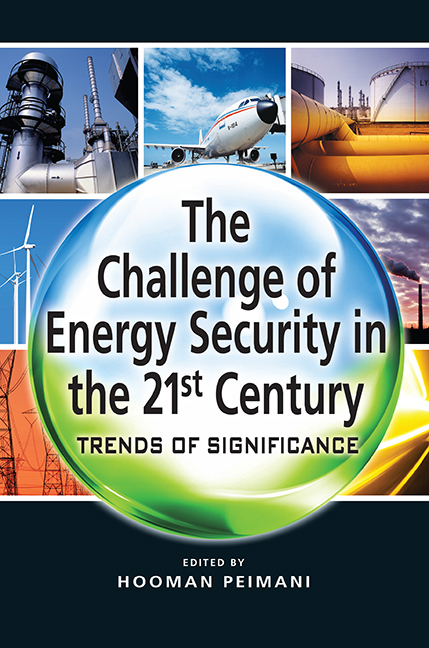Book contents
- Frontmatter
- Dedication
- Contents
- List of Tables and Figures
- List of Maps
- List of Acronyms
- Acknowledgements
- About the Contributors
- INTRODUCTION
- Global Trends in Renewable Electricity, Renewable Fuels, and Markets for Renewable Heating and Cooling
- Resource Mutualism or Codependence? The Water-Energy Nexus in Asia
- OPEC's Long-Term Role in Affecting Energy Security
- Whither a Gas OPEC? Not in the Pipeline
- Shared Interests or Competing Actions: What Drives Energy Security Cooperation between Asia and Europe?
- CONCLUSION
- Index
Resource Mutualism or Codependence? The Water-Energy Nexus in Asia
Published online by Cambridge University Press: 21 October 2015
- Frontmatter
- Dedication
- Contents
- List of Tables and Figures
- List of Maps
- List of Acronyms
- Acknowledgements
- About the Contributors
- INTRODUCTION
- Global Trends in Renewable Electricity, Renewable Fuels, and Markets for Renewable Heating and Cooling
- Resource Mutualism or Codependence? The Water-Energy Nexus in Asia
- OPEC's Long-Term Role in Affecting Energy Security
- Whither a Gas OPEC? Not in the Pipeline
- Shared Interests or Competing Actions: What Drives Energy Security Cooperation between Asia and Europe?
- CONCLUSION
- Index
Summary
1. INTRODUCTION
Traditional interpretations of energy security have centred on supply-side issues of fuel availability, supplier reliability, import dependence, price, and political stability, and have only recently considered the role of social impacts and environmental acceptability. Still absent is an articulation of vulnerabilities caused by non-energy inputs. Nuclear plants cannot generate electricity without fissile material or without sufficient volumes of cooling water. Likewise with water security, as groundwater and surface water resources are stretched to their limits across ever more regions and climate change induces heightened precipitation variability, water sector efforts have shifted in focus from supply to demand, and from development to management. Given that water serves as a key input in exploiting many energy sources and that water is ineluctably dependent on energy, parochial notions of “water security” and “energy security” merit rewriting.
This water-energy nexus refers to the mutual dependence these two resources share, each impacting the ability to achieve security of the other. Since either resource supplies both direct and indirect inputs to the other in various stages of extraction, production, and distribution, changes in the quantity or quality of one inherently affect the other. For example, when heat waves rolled across Europe in 2003 and 2006, and through North America in 2006, power plant operators were forced to cut back generation because of insufficient cooling water. Hydroelectric plants were temporarily constrained by reduced river flows. Conversely, desalination's growth as an energy-intensive solution to supplement freshwater supply demonstrates the bidirectionality of this relationship: that the water sector relies on the energy sector as well. The nexus stipulates inherent trade-offs involved in expanding the resource capacity of either — trade-offs that may be costly in some settings, negligible in others, and perhaps entirely avoidable with integrated planning measures. However, despite the breadth of intersections captured in Table 3.1, policies have more often than not ignored these intersectoral dependencies.
This chapter therefore aims to provide an inexhaustive overview of the water-energy nexus, with an emphasis on the intersection points considered to be of greatest consequence for Asia.
- Type
- Chapter
- Information
- The Challenge of Energy Security in the 21st CenturyTrends of Significance, pp. 39 - 79Publisher: ISEAS–Yusof Ishak InstitutePrint publication year: 2011

